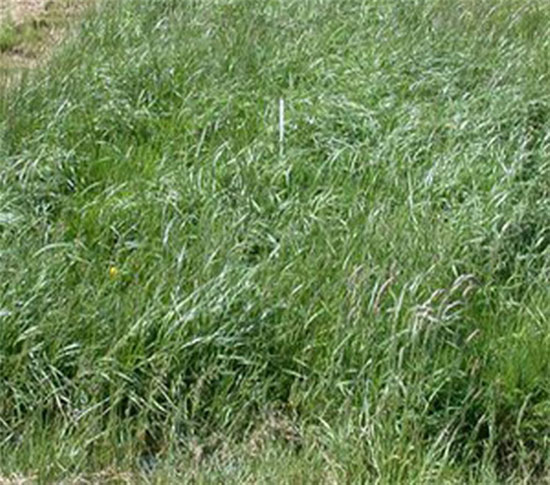Anti-flood grass was born
With the advent of a new grass, the impact of future floods will be drastically reduced.
Scientists from the British Biotechnology Research Council and a number of other research institutions have hybridized long-tail buffalo tailed grass and turf grass to create new grass species, Guardian reported. Its roots produce more holes in the soil than regular grasses. The larger the number of holes in the soil, the more water will be attracted to the flood water.

About the clay that researchers planted
Testing new grass species in Devon, England. (Photo: BBC)
Because the roots of the new grass grow quite quickly, they will keep rainwater in the soil rather than letting water flow into the river - one of the causes of flooding.
A two-year trial showed that the new grass caused the flood effect to drop by 51% compared to the perennials of perennials - the grass that farmers grow for food for cattle.
"The money we save from reducing flood damage will be many times larger than the cost of breeding and growing grass," said Professor Douglas Kell, executive director of the Public Research Council. Biology in the UK, said.
To create new grass species, the team tried to breed hundreds of grass species together. They argue that it will become an effective anti-flood weapon in the context of floods occurring more frequently due to global warming.
Currently 69% of the world's agricultural land is grassland. If the new grass appears on the grasslands, it will both feed the animals and reduce the destructive effect of the flood.
- The grass may be the noodle Thach Sanh that absorbs CO2
- Video: Ghost grass 'devour' the desert house
- Discover a grass that tastes like ... chips
- Overcoming pollution by ... grass
- Squid grass: Great taste
- Detecting dangerous grass in wheat imported into Vietnam
- The species that is capable of 'dying' makes scientists 'headaches'
- Romantic rose grass hill in Da Lat
- Improving coal dumps with ... grass
- The cow suddenly died of poisonous grass
- As a predator, why do so many cat bosses like to eat grass?
- Explore the flood protection system of treasure walls in the world's No. 1 country
 Why do potatoes have eyes?
Why do potatoes have eyes? 'Tragedy' the world's largest carnivorous life: Death becomes ... public toilet
'Tragedy' the world's largest carnivorous life: Death becomes ... public toilet Tomatoes were once considered 'poisonous' for 200 years
Tomatoes were once considered 'poisonous' for 200 years Detecting microscopic parasites on human face
Detecting microscopic parasites on human face